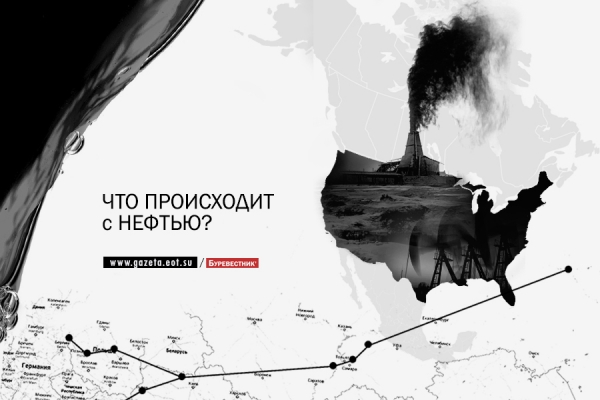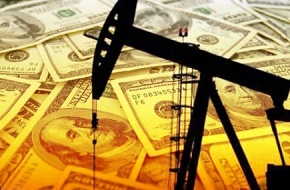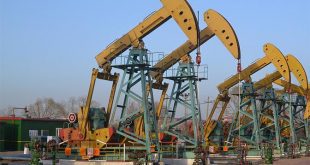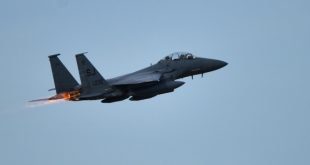
Putin’s order to ensure the rise in world energy prices — an attempt to replace magic economic strategy.
In ancient China each year, the Imperial edict the farmers were commanded to leave on sowing. Sometimes it coincided with the beginning of works, and sometimes not. The peasants had no habit to argue with the boss, but relied on their experience and weather conditions.
All edges of the Earth in ancient times in the middle of a drought were prayers for rain. It happened that after that and in fact it was raining, but it happened, and what was not. Nature has its own laws.
Recently Vladimir Putin summoned the captains of the Russian oil companies and advised them to freeze oil production at the January level. They, of course, agreed. Especially when I learned from the President of Russia, energy Minister Alexander Novak “is engaged in study of issues related to the stabilization of the world energy market, consults constantly with our partners, with leading players in the global oil market… and practically agreed with its partners on the world market that this year we have increased oil production…”
Officials from several countries neatorama really recently announced that it would cease to increase oil exports, subject to the consent of all its producers.
Is it possible something like that? No, it is impossible. To the U.S., which along with Saudi Arabia and Russia are the world’s largest neftegazopromyslovyi, with such suggestions and even to approach there is no reason. Iran, potentially the fourth world producer of oil and gas, just now recovering from the sanctions and is doing everything as quickly as possible to increase its energy exports.
Maybe the restraint of at least some, the most conscientious exporters stabilizes the market and prices? If you strongly want something you can imagine. But the restraint must be very severe. Say, Saudi Arabia and (or) Russia would cease to trade oil. For a long time or not, the prices will grow. However, something tells: our power will not save the competitors price harakiri. And the Saudis too will be gone.
Hope for the effectiveness of price and export agreements of neatorama is the same that to believe in the magical efficacy of prayers for rain. Today’s global energy market is a buyer’s market. If some sellers will freeze or reduce the supply, it will only increase your losses, although it will deserve deep appreciation to competitors who will seize their market niche.
The Saudis had such an experience in the 1990s years, the last era of cheap oil. Then the restraint has not brought them nothing but losses. That all changed only at the beginning of the two thousandth, when the energy market became a seller’s market. But this era, although may briefly return to the case, for example, a large-scale middle East war, by and large over. The shale revolution, a revolution in technologies and a General expansion of energy producers, negated verbal intervention exporters and in General any claim to “energy sverhderzhavnomu”.
The Russian oil and gas exports may in fact entering the phase of stagnation. For last year the volume of Nefteprodukt increased significantly — by as much as 9%. But this seems to be the last time. This year exports will increase and if, then only slightly. The reason is not the noble impulse to stabilize world prices, and just the exhaustion of opportunities for production growth. The management of most of our bad governmental companies, the cost is high, investment is low.
No wonder most radical thoughts on the meeting with Vladimir Putin has sounded, it is said, from the head of “Rosneft” Igor Sechin. Focusing probably on the realities of his own company, he allegedly offered did not even freeze, and to reduce the oil production. But did not find understanding from fellow magnates.
The next session of the collective magic is scheduled for either the end of March, or early April. Representatives of the countries-petrogetters promise again somewhere to gather and even more serious tone than before, to threaten to freeze the prey.
However, leave the virtual world. Except in real life the oil can rise? By their own logic. Because after the prayers and in fact has rained, and the beginning of agricultural works sometimes — and even often coincide with the release of the Imperial edict.
A little news: in 2013 the average price of Russian Urals was $108 per barrel in 2014 — $98, 2015 — $51. Solid fall.
Now look what is happening in recent months. In December of 2015 a barrel of Urals cost $36 (versus $61 in December of the previous year), in January 2016 — $29 (year before — $47) and in February 2016 — $31 (the year before to $57). Finally, in the first days of March a barrel of Urals (the price of which, recall, is slightly lower than the Brent price) costs about $35 (in last year’s March was $55).
Does it follow that the price minimum is passed? It is not excluded. But with much greater certainty we can say that in 2016 the average price will be lower than in 2015. And it seems that much.
The peculiarity of our time that the maximum price for oil easier to speak about than the minimum. The maximum is the level at which shale oil production becomes profitable and increases sharply, not letting the prices further up. Improving technology continuously reduces and will reduce this ceiling. A year ago it was at $60, and now already around $50. The most fervent of American experts say even about $40, but apparently run ahead.
Can the oil price in the coming months to take off before the current “ceiling” of $50? Theoretically, but unlikely to take off. The market is defined not by the magical passes of the countries neatorama, and a speed reduction of oil production in the US (as long as the price of a barrel of under $40, production will be reduced), the degree of rigidity of the fed’s policy, the depth of the crisis in China, the middle East wars, etc. If the ratio of these factors will remain roughly the same as it is now, $40 (or slightly more) per barrel of Urals crude oil on average in 2016 is pretty optimistic scenario. It is possible to get worse.
The Ministry has already in any case have produced something like approximate forecast for the whole era forward, until 2019-th inclusive, on the assumption that the oil price in these years will range between $35-45. The era is seen by the officials-writers rather bleak: permanent, albeit decelerating, decline in living standards of the people amid the economic downturn, smoothly rolling into stagnation.
But even in this scheme, stage harsh realism, there is nothing fundamentally new. If the reduction in military spending is taboo, for the dismantling of the oligarchic economy also, if the social institutions do not see any reason to prepare for rising unemployment and the suffering of the common people it is supposed infinite, we once again draw the same pochinaiko, still tied to oil prices, even if it is abruptly fallen.
To understand how today’s reality, you need to understand that oil is no longer the Foundation of the regime, but simply one of export commodities, and the prices are also not subject to the edicts of the higher, as grain prices or software. But even this first step for a year and a half of crisis is not made.







